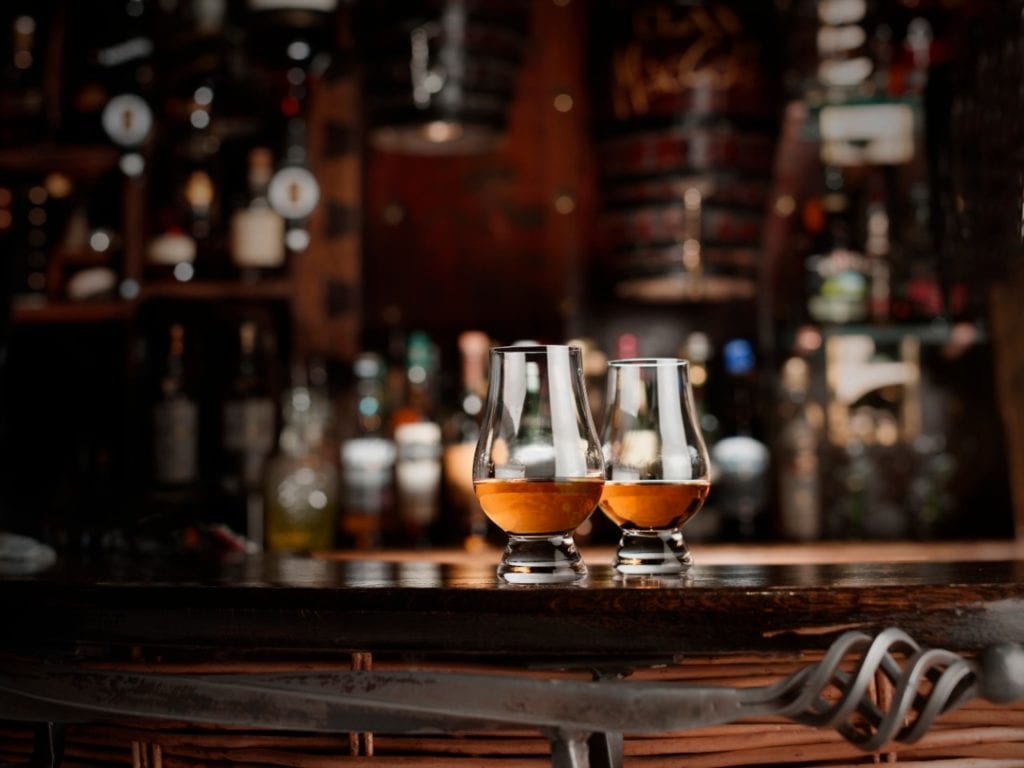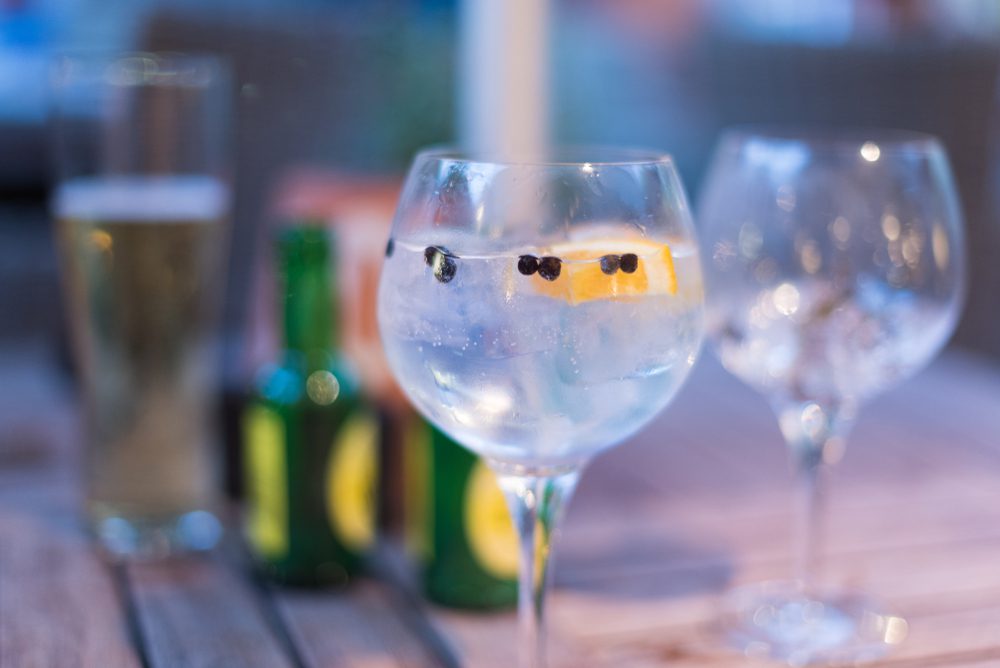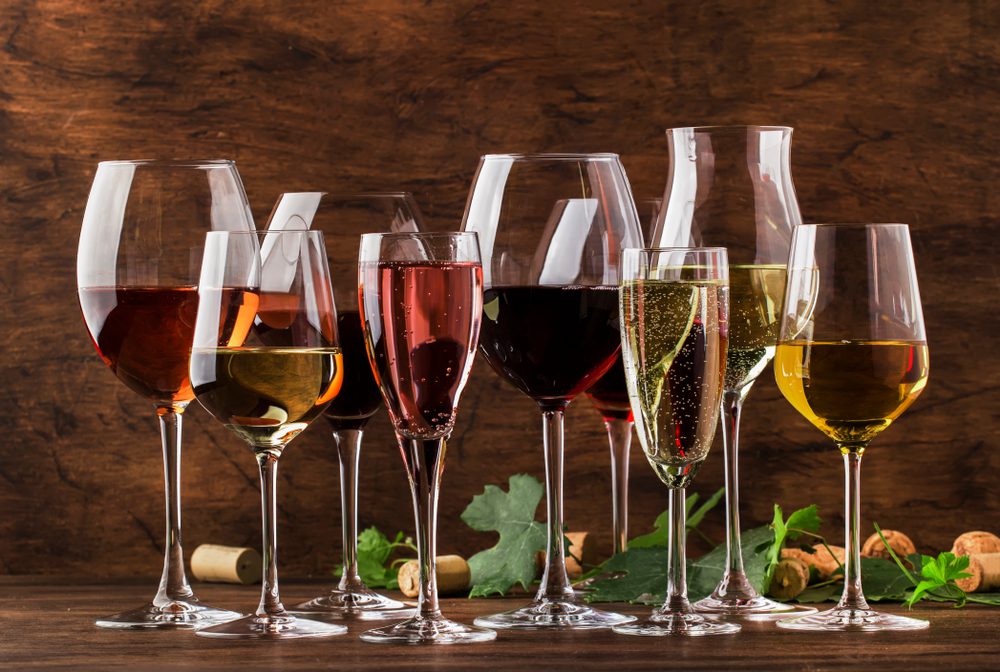When it comes to drinking at home, many of us are happy to use whatever glasses we have without thinking, but the size and shape of glassware has an impact on the drink you pour inside.
From the trendy gin goblet and its roots to how the famous Glencairn glass was designed for whisky - here, a range of experts in the drinks industry give their insights in to what glasses to use for certain drinks, plus their insider tips and favourites.

The Glencairn Glass is probably the most recognisable whisky glass, with over 3 million being sold each year across 140 different countries.
The tulip shaped glass is endorsed by the Scotch Whisky Association as the official glass for whisky. This is due to its unique shape, which has been crafted to enhance the enjoyment of all whiskies and to get the most out of each dram.
Its tapering mouth captures those all-important aromas, and the wide bowl allows the fullest appreciation of the whisky colour with the thistle style base designed to be comfortable to hold.
The glass came about thanks to Raymond Davidson’s - Glencairn Crystal founder - vision to create a glass that would encourage the user to fully appreciate the nose and palate of a whisky, whilst being an aesthetically pleasing object.
Speaking of the glass, Raymond Davidson says: “When I first had the idea for creating a tasting glass specifically for whisky, little did I realise what an incredible success it would eventually become.
"In fact my prototype glass was relegated to the filing cabinet for almost 20 years until my son Paul (now Glencairn Crystal’s managing director) came across it whilst searching through samples.
"It was then brought to the attention of some master blenders in the scotch whisky industry and with their guidance and expertise, the glass evolved and became the Glencairn Glass that we know today.
"20 years later I’m immensely proud that we now sell over 65,000 Glencairn Glasses each week all over the world.”
Colin McLean of McLean Gin expands on the Glencairn design and why its shape is best for experiencing the entire whisky journey: "With a tulip shaped glass like the Glencairn, the vapours and esters are trapped inside the glass by its shape.
"The "taste" of the spirit won't necessarily be improved by the glass in itself, but as "flavour" is essentially a combination of both taste and smell, trapping these vapours in the glass gives more nose, which in turn, gives an overall improved flavour.
"The shape of the Glencairn glass essentially directs the vapours and esters straight to your nose.
"For a long time I'd assumed this was all snobbery, but having recently received a set of Glencairn glasses for Father's Day, there really is no going back; they do make for a superior drink.
"Others are available, but I have no desire to seek them out as I love the Glencairn! Top tip: fill the glass to its widest point (50ml in a Glencairn) for maximum nose (and in turn, flavour)."
Kenny Maclean, the head distiller at the Isle of Harris Distillery says the Glencairn is great for nosing, and has this tip: "Hold the glass in the palm of your hand, this will warm up spirit.
"The wide base will allow volatile compounds to evaporate better on large surface area. The narrow top will allow these aromas to linger in the glass and concentrate."
Stewart Buchanan, brand ambassador for BenRiach advocates a Glencairn glass as well as a crystal tumbler and a sherry copita glass, depending on which whisky you're drinking and the setting.
He says: "With big, bold dynamic flavours like the intensely peated Benriach 21 Year Old Temporis, I will go for a stemmed sherry copita glass - this is when I slow the pace down and get just as much enjoyment from the nose as I do the taste.
"The tulip shape helps focus the aroma in the right direction and I feel that the stem lets the dram adjust to room temperature, rather
than being overly warmed by the hand, perfect for allowing the fruity aromas to develop over time.
"More socially, say with the BenRiach 10 Year Old, a Glencairn whisky glass ticks all the boxes; balanced in the hand and a great all-rounder for enjoying layers of fruity flavour and aroma, yet robust enough to handle a few clinks and ‘Slàinte Mhaths’ with friends.
"I also see nothing wrong with an old fashioned crystal tumbler, although not one too large; I was brought up with small highland crystal tumblers and decanters in the house and there is something quite elegant about them."

Picture: Shutterstock
A more recent addition to how we drink gin is the gin goblet. Usually packed with ice, this balloon glass has become a common sight in bars and restaurants, as the gin scene has grown.
Euan McVicar of Biggar Gin discusses the gin glass debate, and why certain shapes are ideal for the gin and tonic: "The big debate among gin and tonic drinkers is between the Spanish still copa glass or gin goblet and a high-ball or tumbler.
"The shape of the copa / goblet does allow you to capture the nose of the gin and many say it accentuates the botanicals. The long stem stops the warmth of your hands spreading to the glass.
"However it is often filled with lots of small ice cubes which will melt more quickly than a large block of ice and dilute the drink more quickly.
"The size of a goblet can often lead to a natural tendency to drown the gin in too much tonic. For those reasons we tend to prefer a classic high-ball or tumbler which can take a hefty piece of ice and avoids the tendency to drown the gin.
"At the end of the day it’s a matter of personal choice about getting your proportions and size rights.
"We are a more dogmatic when it comes to serving a classic cocktail like the gin Martini. A good martini needs to be “served up” nice and cold and without ice in the glass.
"A martini glass is a very pragmatic style for making sure your cocktail is poured easily from the mixing jug and the long stem helps keep the drink colder for longer."
Speaking of Martini glasses, some of the most eye-catching and covetable on the market come from the Isle of Harris Distillery, which is famous for its rippled blue bottle - the design of which is copied into its range of glasses.
This range includes a tumbler set as well as Martini glasses and have been made in collaboration with Wrześniak Glassworks,
Isle of Harris Distillery's head distiller Kenny Maclean’s says: "It’s best to think about the glasses practically. They might look pretty and exotic but practically what are they doing to the spirit?
"Thick tumblers don’t warm up so easily so keep drinks cold and can accommodate large ice blocks."
Colin McLean of McLean Gin goes into the science of spirits and how glass shape can affect this, saying: "In a nutshell, even at room temperature, spirits (when exposed to air) will emit vapours.
"Contained within these vapours are esters; acid derived chemical compounds. Esters can have an array of different aromas, for example, ethyl acetate smells like pear drops; isoamyl acetate like bananas, ethyl methylphenylglycidate like strawberries.
"Esters bind to alcohol during the distillation process and so all distilled spirits - whether botanical ingredients are included via re-distillation or not - will contain esters. The primary esters in gin come from juniper berries; alpha & beta pinene (as well as others including limonene, which provides citrus notes).
"As for the gin goblet, this was formerly known as Copa de Balon, which translates from Spanish to "Balloon Cup".
"The Copa de Balon has been the glass of choice in Spain for many years; gin tonica is very popular there.
The Copa serves two purposes; the first is mirroring the vapour-trapping shape of the Glencairn (similar in many ways to a wine glass, but typically quite a lot bigger); this naturally gives a good nose and so improved flavour.
"The second is to allow lots of ice and garnish. The higher the volume of ice, the colder the drink and the less dilution (it seems counter-intuitive in many ways, but smaller volumes of ice melt quicker). Perhaps less of an issue in chilly Scotland than it is in Spain, mind you.
"Which leads us to the (unofficial) third reason for its popularity; fashion. Nothing says sophistication like an elegantly-stemmed Copa filled with ice, fruit, herbs, gin and tonic.
"Now somewhat removed from it's initial purposes, the Copa de Balon has become something of a status symbol and, as much as I do like them, I'd personally take a slim Collins glass over a Copa."

Picture: Shutterstock
The Scotsman wine columnist and master of wine, Rose Murray Brown feels that thickness of wine glasses make a difference, saying: "Personally I love using a thin fine-stemmed glass with a thin rim and decent sized bowl - as I think it can make the wine taste finer for a variety of reasons.
"I use a mix of Riedel, Spiegelau - and for special occasions Zalto (my favourite) – although the finer the glass the easier it is to break."
Virtual tastings have given Rose an insight into how wine is drunk at home, which she elaborates on: "Interestingly I have really been noticing what people at home are using at the moment during the current virtual tastings.
"If I am doing a physical tasting with everyone present in the room I would be supplying all the glasses myself.
"However with virtual tastings, with people in their homes with their own glassware, there seems to be a collection of different (and some unsuitable glasses) being used,which is a shame.
"Cut glass or coloured glass is not suitable for tasting any wines – and thick chunky glassware does not help either. One of my least favourite glasses is a chunky small Paris goblet (often found in pubs)."
When it comes to sparkling wine, Rose says: "For occasions I would suggest ‘flute’ glasses for fizz as it does show off the line of bubbles well, but for actually tasting fizz I always use a white Burgundy glass as I like to analyse sparkling wine in the same way as I do a still wine (and allow the compounds to spread across a wider area of glass to help them breathe).
"I would definitely NOT recommend the ‘coupe’ glasses which were popular in the Naughty 90’s (1890s)."
For white wines, Rose says: " I tend to choose a fine stemmed glass with a slightly smaller bowl for whites to keep them cool longer. I usually serve Roses in white wine glasses."
And for red wines: "Bigger bowls with larger openings allow you to smell the bouquet and helps volatile aromas to be released (as reds need a bigger surface to ‘breathe’).
"For more delicate Pinot Noir I tend to prefer bigger bowled glasses, whilst Cabernet Sauvignon glasses are slightly taller to direct wine to the back of your mouth.
"For all round everyday use and general tasting, I would suggest the Riedel restaurant Zinfandel/Riesling glass (dishwasher friendly) which is a fine stemmed glass with a moderately large bowl which narrows very slightly at the top and is made of thin glass – it works quite well for whites and reds.
"Another tip is to be careful how you wash and dry your wine glasses – clean warm water, not too much washing up liquid and a clean ‘glass drying cloth’ is important (Riedel sell these cloths)."
Kenny Maclean, the head distiller at the Isle of Harris Distillery adds: "Champagne flutes have a long stem to reduce heat transfer into glass, and encourage holding the stem rather than glass.
"The long body with small surface area is ideal for reducing evaporation and loss of bubbles."
For red wine he says: "A red wine glass is very wide to encourage oxidation - letting wine breathe and develop. This is why wine is decanted also , and opened in advance."
When it comes to a digestif or apéritif, Rose says: "Personally I don’t like the small copitas that are often used as they are a bit mean (the small bowls do reduce alcohol evaporation a little) – but I prefer slightly larger glasses for tasting sherry and port.
Kenny Maclean adds: "Brandy glasses, are thinner glass very wide and round to sit in the palm of your hand to allow the liquid to warm up."
Scran episode 15: Secrets of a wine connoisseur - with Diana Thompson
